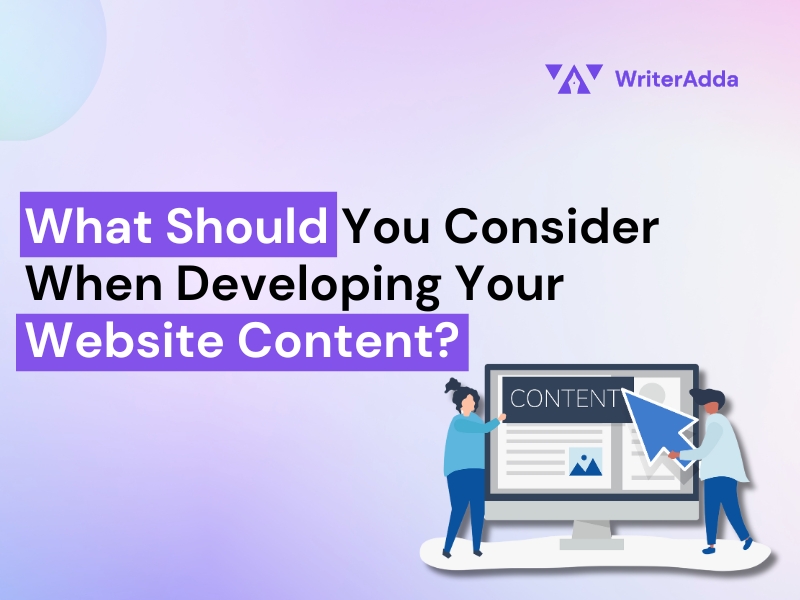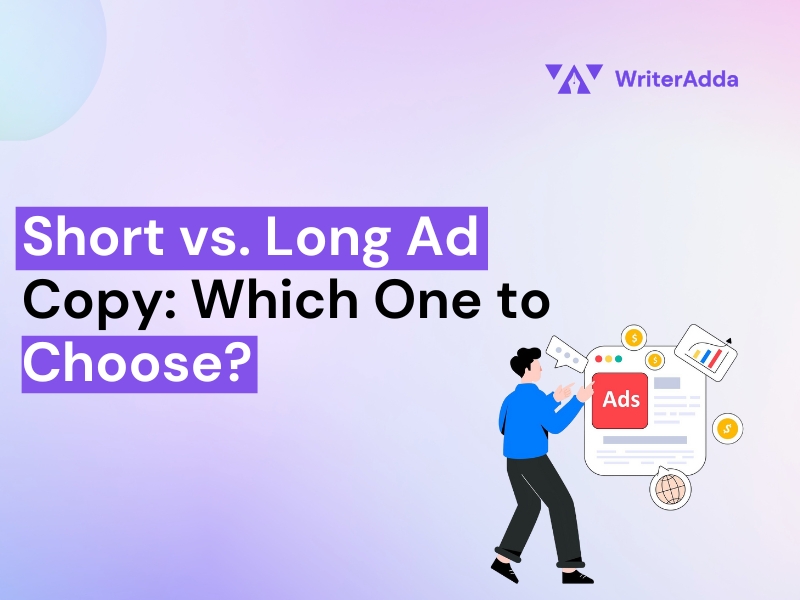With the growing dominance of the internet over everyone’s lives, your website often serves as the front door to your business. Your website’s content informs visitors and engages them, builds your brand, and converts visitors into customers. Given its critical role, developing effective website content must be a top priority for any business operating online. This article explores various crucial factors to consider when crafting your website content to ensure it is both compelling and effective.
Importance of Website Content for Online Businesses
Website content is not just the backbone of your online presence but also embodies your business’s unique personality, setting you apart in a competitive market. Acting as a crucial bridge between you and your target audience, it plays a multifaceted role in the digital marketplace. High-quality, well-defined content that resonates with user needs retains visitors on your site and significantly increases the likelihood of converting them into customers.
More than just a means of communication, effective website content establishes your brand’s credibility and trustworthiness. It demonstrates your expertise and industry knowledge through informative content that offers valuable insights, convincing readers of your authority and research rigor.
Furthermore, integrating the best SEO practices enhances your digital visibility and improves your rankings on search engine results pages (SERPs). In essence, the strategic development of website content is indispensable, serving as one of the most critical aspects that every website owner must diligently address to thrive in the business landscape.
How to Develop Content for a Website
Developing content for a website involves several crucial steps, from understanding your audience to promoting your content effectively. Below, we explore each of these steps to guide you in creating content that not only attracts but also retains and converts your website visitors.
Researching Your Target Audience and Competitors
Before you begin creating any content, it’s essential to know who you are creating it for and what the competition looks like. Start by pinpointing your target audience based on their demographics, interests, challenges, and online habits. This will enable you to adjust your content to address their particular requirements. Concurrently, analyse your competitors to understand the type of content they are offering, their engagement strategies, and their SEO tactics. This dual approach helps in pinpointing market gaps and discovering opportunities for differentiation.
Keyword Research
Once you understand your audience and competition thoroughly, move on to keyword research. Keywords are vital as they are the terms used by potential customers to find solutions online. Make use of helpful resources such as Google Keyword Planner, Ahrefs, or SEMrush for recognizing relevant keywords that have high search volumes and manageable competition levels. This research will not only inform the topics you should cover but also help in optimizing your content for search engines.
Content Creation
With a proper understanding of your audience and the strategic use of targeted keywords, you are now equipped to craft engaging content that captivates and retains visitors. Begin with an enticing outline, emphasizing clear, logical structure and compelling headers that immediately capture attention. Start your pieces with intriguing introductions, perhaps a provocative question, striking statistics, or a vivid idiom to spark curiosity and draw readers in.
Integrate different content types, like articles, blogs, videos, images, and podcasts, to meet any and all preferences and increase user interaction. Although content shouldn’t just be intriguing but also organized and readable, ensuring that every piece adds value and addresses the user’s intent effectively. By focusing on these aspects, you ensure your content is not just seen but appreciated and acted upon, increasing the likelihood of repeated visits and interactions with your site.
Content Optimization
After creating your content, the next step is optimization. This involves ensuring your content is crafted to meet SEO best practices, such as using keywords naturally throughout the text, optimizing meta tags and descriptions, and structuring content with headers for easier reading and better SEO performance. Additionally, make sure that your content can be easily accessed on all types of devices, especially mobile phones since a large number of users currently use smartphones to access the internet.
Content Promotion
Creating and optimizing your content is only part of the journey. Promotion is key to attracting more traffic and higher engagement. Utilize a range of channels to amplify your content reach, such as social media platforms, paid advertising, email newsletters, and pop-ups. Also, think about partnering with influencers and other companies to expand your reach. Regularly engage with your audience through comments and social media to build relationships and encourage more interaction with your content.
Key Considerations for Crafting Exceptional Website Content
-
Main Purpose of the Website
Every piece of content on your website should serve a specific purpose. Do you aim to inform, entertain, convince, or sell? Understanding the primary goal of your website guides the content development process, ensuring that every page aligns with your business objectives. For instance, an e-commerce site will focus more on product descriptions and sales-oriented content, while a nonprofit might prioritize informational content that builds awareness about a cause.
-
Determining Your Target Audience
It’s detrimental to know the audience you’re writing for. Your content must resonate with the specific desires, preferences, and behaviours of your target audience. Collect valuable data about your audience’s demographics, interests, and online behaviours through thorough market research. This understanding allows you to gauge and customize your content to speak directly to your audience, making it more relevant and engaging.
-
Planning Your Content
Effective content requires strategic planning as well. Create a content calendar that outlines what to publish, when, and where. The plan should take into account important industry events, product launches, and other significant dates that align with your business strategy. Such planning helps in maintaining a consistent flow of content, which is vital for engaging and retaining your audience.
-
Use of Attractive Visuals
Incorporating engaging visuals such as pictures, videos, infographics, and charts can greatly enhance the attractiveness of your content. Visuals help in breaking up text-heavy pages and also help in illustrating complex ideas more effectively to your audience. Ensure that the visuals you use for your website content are high quality and relevant to the accompanying text to boost engagement.
-
Tonality of Content
Your content’s tone should mirror your brand’s personality. Choose a professional, friendly, informative, or casual tone and stick to it as consistent tonality helps in building a coherent brand image. You can decide on what tonality to use by reviewing your target audience and the subject you are writing on. But once you have established a certain type of tonality in your content, stick to it! This consistency in voice reassures your audience of your professional brand image and fosters a stronger connection with them.
-
Usage of Keywords
If you want your content to reach the maximum set of eyes, SEO should be a fundamental aspect of your content strategy. To boost your content’s visibility on search engine results pages (SERPs), ensure you include relevant keywords. This optimization will enhance your content’s reach and impact. Nevertheless, make certain that the inclusion of keywords feels organic and does not compromise the readability of your content. Excessive use of keywords can result in penalties from search engines and detract from the user experience.
-
Length of Content
The appropriate length for your content also depends on the topic and the preferences of your target audience. While longer content allows for in-depth discussions and is often favored by search engines, shorter content may be appropriate for topics that require straightforward explanations. Remember that balance is key, ensuring that each piece of content provides value without overwhelming the reader.
-
Grammar and Plagiarism
The credibility of your website depends on its content quality. Poor grammar and plagiarized content can severely damage your brand’s reputation and be ignored by the search engine’s algorithm. Always use plagiarism checkers and grammar tools such as Grammarly to ensure your content is original and error-free. Professionalism in your writing reflects the quality of your business and boosts your brand image.
-
Concise Call to Action
Every bit of content needs to serve a specific goal, and frequently that goal is to motivate the reader to take some action. Whether it’s driving them to your website, making a purchase, or reaching out to your business, your call to action (CTA) needs to be easily understood, convincing, and succinct. A carefully constructed CTA has the potential to be the final push that transforms your passive readers into engaged participants.
-
Keeping an Eye on Analytics
Make it a point to consistently check your website analytics in order to grasp the performance of your content. Pay attention to metrics like page views, bounce rate, and conversion rates as they can offer valuable information about which content engages your audience and which doesn’t. It is one of the most crucial steps to keep growing and improving your content and gauging more audiences while retaining your loyal readers. Utilize this data to modify your content strategy and improve engagement.
-
Staying Up to Date
The online environment is constantly changing, and your content should change along with it. Stay informed on current industry trends, algorithm updates, and best practices to stay ahead of the curve. Using the analytics, as mentioned previously, in tandem with continuous market research, helps you stay up to date with the industry and online guidelines and trends which keeps you relevant and fresh. Refreshing and updating your content regularly not only helps maintain its relevance but also strengthens your SEO efforts.
Conclusion
Developing your website content is more than just about filling pages with text and images. It’s about creating a dynamic resource that informs, engages, and converts your target audience. By considering these critical aspects you can craft content that reflects your brand and drives your business forward in the digital world. Remember, your website is your global storefront so make it count.




